Mercedes G Class vs Maserati Grecale – Performance, range & efficiency compared
Both models have their strengths – but which one suits you more?
Compare performance, efficiency, price and space directly: Mercedes G Class or Maserati Grecale?
Here’s where it gets real: The technical differences in detail
Costs and Efficiency: Price and efficiency are key factors when choosing a car – and this is often where the real differences emerge.
Maserati Grecale has a decisively advantage in terms of price – it starts at 71500 £, while the Mercedes G Class costs 106600 £. That’s a price difference of around 35080 £.
Fuel consumption also shows a difference: the Mercedes G Class manages with 8.70 L and is therefore hardly perceptible more efficient than the Maserati Grecale with 8.80 L. The difference is about 0.10 L per 100 km.
In terms of energy consumption, the advantage goes to the Maserati Grecale: with 23.90 kWh per 100 km, it’s a bit more efficient than the Mercedes G Class with 28 kWh. That’s a difference of about 4.10 kWh.
As for range, the Maserati Grecale performs hardly perceptible better – achieving up to 501 km, about 33 km more than the Mercedes G Class.
Engine and Performance: Under the bonnet, it becomes clear which model is tuned for sportiness and which one takes the lead when you hit the accelerator.
When it comes to engine power, the Mercedes G Class has a hardly perceptible edge – offering 605 HP compared to 558 HP. That’s roughly 47 HP more horsepower.
In acceleration from 0 to 100 km/h, the Maserati Grecale is somewhat quicker – completing the sprint in 3.80 s, while the Mercedes G Class takes 4.40 s. That’s about 0.60 s faster.
In terms of top speed, the Maserati Grecale performs evident better – reaching 285 km/h, while the Mercedes G Class tops out at 220 km/h. The difference is around 65 km/h.
There’s also a difference in torque: the Mercedes G Class pulls clearly perceptible stronger with 1164 Nm compared to 820 Nm. That’s about 344 Nm difference.
Space and Everyday Use: Beyond pure performance, interior space and usability matter most in daily life. This is where you see which car is more practical and versatile.
Both vehicles offer seating for 5 people.
In curb weight, the Maserati Grecale is distinct lighter – 1870 kg compared to 2485 kg. The difference is around 615 kg.
In terms of boot space, the Mercedes G Class offers to a small extent more room – 640 L compared to 535 L. That’s a difference of about 105 L.
When it comes to payload, Mercedes G Class hardly perceptible takes the win – 715 kg compared to 690 kg. That’s a difference of about 25 kg.
All in all, the Mercedes G Class shows itself to be shows small but notable strengths and secures the title of DriveDuel Champion.
It impresses with the more balanced overall package and proves to be the more versatile companion for everyday use.
Mercedes G Class
The Mercedes-Benz G-Class stands as a symbol of rugged luxury, combining robust off-road capabilities with sophisticated design. Its iconic boxy shape and imposing presence are complemented by a lavish interior that offers a blend of comfort and cutting-edge technology. Despite its longstanding heritage, the G-Class continues to evolve, maintaining its status as a premier choice for those seeking both adventure and opulence.
details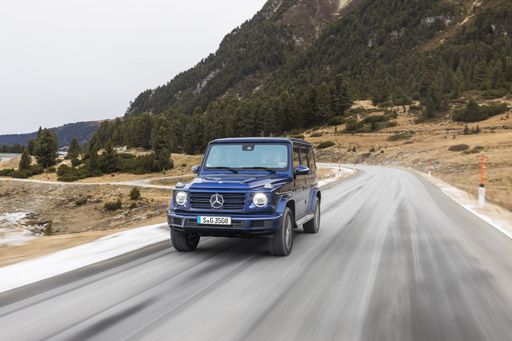 @ group-media.mercedes-benz.com
@ group-media.mercedes-benz.com
 @ group-media.mercedes-benz.com
@ group-media.mercedes-benz.com
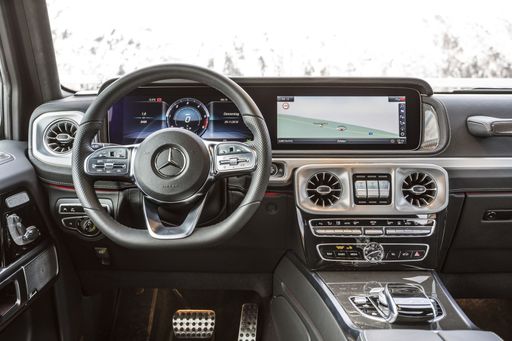 @ group-media.mercedes-benz.com
@ group-media.mercedes-benz.com
Maserati Grecale
The Maserati Grecale elegantly combines luxury and performance, making it a standout choice in the SUV market. Its sophisticated design is complemented by a spacious interior that offers both comfort and high-end finishes. Advanced technology features ensure a driving experience that is as smooth as it is dynamic.
details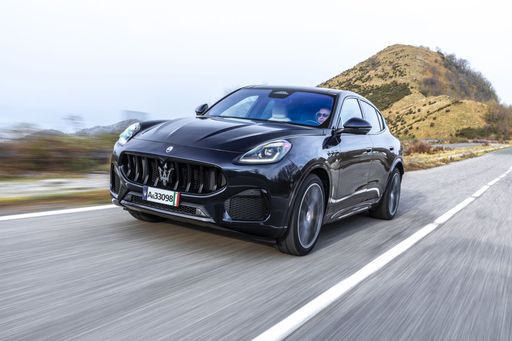 @ media.maserati.com
@ media.maserati.com
 @ media.maserati.com
@ media.maserati.com
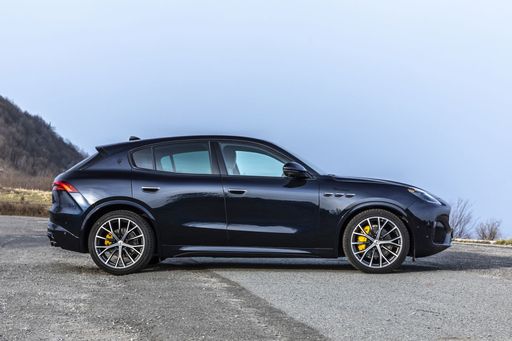 @ media.maserati.com
@ media.maserati.com
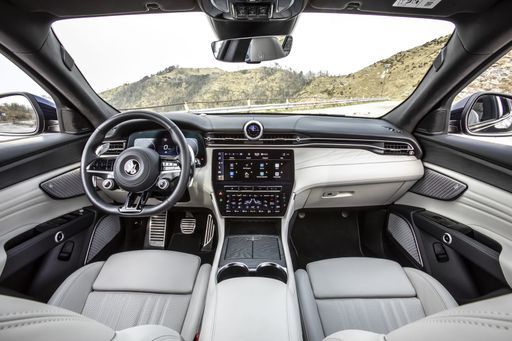 @ media.maserati.com
@ media.maserati.com

|

|
|
|
|
Costs and Consumption |
|
|---|---|
|
Price
106600 - 171000 £
|
Price
71500 - 107400 £
|
|
Consumption L/100km
8.7 - 14.7 L
|
Consumption L/100km
8.8 - 11.2 L
|
|
Consumption kWh/100km
28 kWh
|
Consumption kWh/100km
23.90 kWh
|
|
Electric Range
468 km
|
Electric Range
501 km
|
|
Battery Capacity
116 kWh
|
Battery Capacity
98 kWh
|
|
co2
0 - 336 g/km
|
co2
0 - 254 g/km
|
|
Fuel tank capacity
100 L
|
Fuel tank capacity
64 L
|
Dimensions and Body |
|
|---|---|
|
Body Type
Off-Roader
|
Body Type
SUV
|
|
Seats
5
|
Seats
5
|
|
Doors
5
|
Doors
4
|
|
Curb weight
2485 - 3085 kg
|
Curb weight
1870 - 2480 kg
|
|
Trunk capacity
620 - 640 L
|
Trunk capacity
535 L
|
|
Length
4624 - 4873 mm
|
Length
4846 - 4865 mm
|
|
Width
1931 - 1984 mm
|
Width
1948 - 1979 mm
|
|
Height
1973 - 1983 mm
|
Height
1651 - 1670 mm
|
|
Max trunk capacity
1990 - 2010 L
|
Max trunk capacity
-
|
|
Payload
415 - 715 kg
|
Payload
630 - 690 kg
|
Engine and Performance |
|
|---|---|
|
Engine Type
Electric, Petrol MHEV, Diesel MHEV
|
Engine Type
Electric, Petrol MHEV, Petrol
|
|
Transmission
Automatic
|
Transmission
Automatic
|
|
Transmission Detail
Reduction Gearbox, Automatic Gearbox
|
Transmission Detail
Reduction Gearbox, Automatic Gearbox
|
|
Drive Type
All-Wheel Drive
|
Drive Type
All-Wheel Drive
|
|
Power HP
387 - 605 HP
|
Power HP
301 - 558 HP
|
|
Acceleration 0-100km/h
4.4 - 5.8 s
|
Acceleration 0-100km/h
3.8 - 5.6 s
|
|
Max Speed
180 - 220 km/h
|
Max Speed
220 - 285 km/h
|
|
Torque
760 - 1164 Nm
|
Torque
450 - 820 Nm
|
|
Number of Cylinders
6 - 8
|
Number of Cylinders
4 - 6
|
|
Power kW
285 - 445 kW
|
Power kW
221 - 410 kW
|
|
Engine capacity
2989 - 3982 cm3
|
Engine capacity
1995 - 3000 cm3
|
General |
|
|---|---|
|
Model Year
2024 - 2025
|
Model Year
2024 - 2025
|
|
CO2 Efficiency Class
A, G
|
CO2 Efficiency Class
A, G
|
|
Brand
Mercedes-Benz
|
Brand
Maserati
|
What drive types are available for the Mercedes G Class?
Available configurations include All-Wheel Drive.
The prices and data displayed are estimates based on German list prices and may vary by country. This information is not legally binding.
